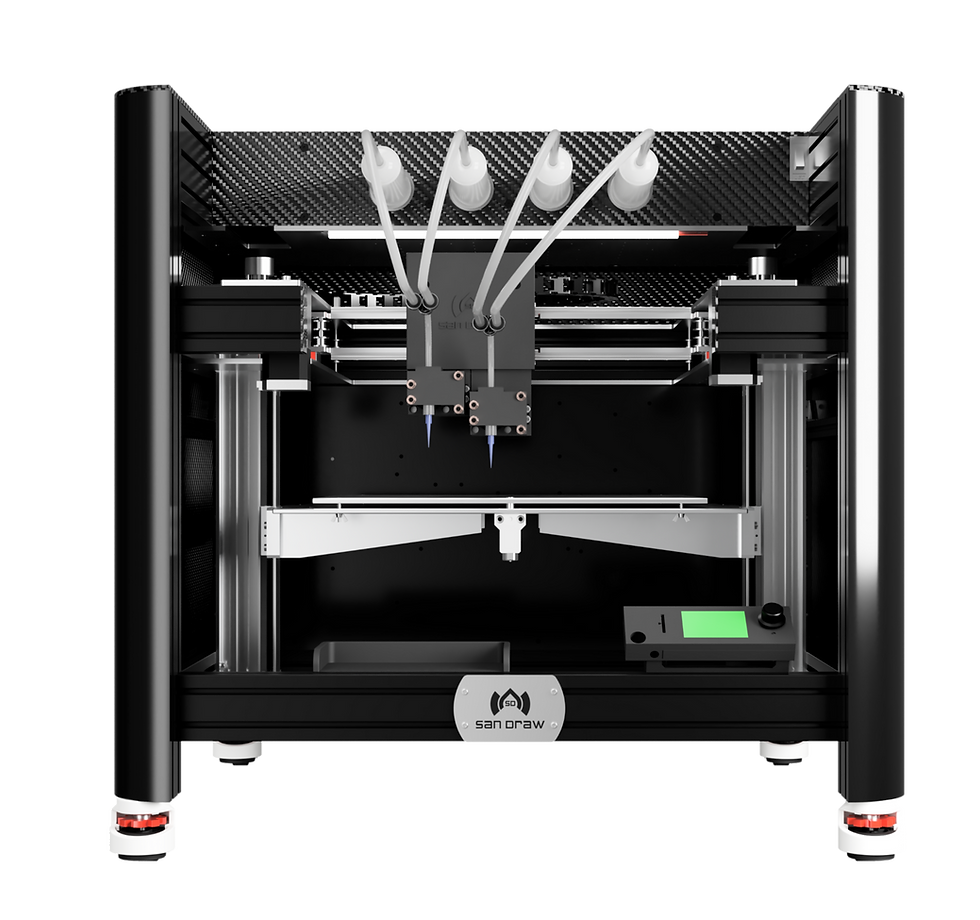Case Study: Pushing the Limits of Silicone 3D Printing with Ultra‑Fine Lattice Structures
- Sep 15
- 3 min read
Updated: Sep 22
In the fast-evolving world of additive manufacturing, the capability to produce ultra-fine lattice structures is transforming what’s possible, especially with silicone, a material traditionally considered difficult for high-precision 3D printing. Today, we share a deep dive into an impressive case study: how ultra-dense, geometrically complex lattice structures in silicone were realized, pushing both the physical limits of the material and the technology behind printing.
If you are researching advanced silicone 3D printing, lattice geometries, or the frontier of functional materials for applications in biomedical implants, soft robotics, or high-performance cushioning, this post is for you.
What Are Lattice Structures & Why They Matter?
A lattice structure is a repetitive, often periodic network of interconnected struts or cells forming a 3D architecture. Key benefits include:
High strength-to-weight ratio — lightweight but resilient.
Tailorable mechanical properties — stiffness, flexibility, energy absorption can be tuned via cell size, orientation, wall thickness.
Material efficiency — less material for more performance.
Functionalization — for ventilation, fluid flow, thermal regulation, acoustic dampening, etc.
In silicone, achieving ultra-fine lattice geometry means enabling applications where softness, elasticity, and biocompatibility are critical, without losing precision or structural integrity.
Watch the full printing process👉
The Challenge: Precision in Silicone 3D Printing
Silicone is beloved for many properties—biocompatibility, flexibility, chemical stability, etc. But it poses challenges for high-resolution 3D printing, especially for lattice structures:
Viscosity & flow control — too viscous and detail is lost; too thin and mechanical strength suffers.
Curing / cross-linking control — rapid curing vs. post-process curing, risk of warping or shrinkage.
Support & structure — delicate lattices need supports or smart design.
Print resolution and nozzle / exposure limits — achieving fine struts demands high resolution both in hardware and software.

Silicone 3D Printing: Lattice Structure
Case Details: Ultra-Fine Lattice in Silicone
Here is what makes this case outstanding:
Cell size / Feature resolution: Sub-millimeter struts and nodes, achieving lattice pitches (distance between repeated elements) that challenge the resolution of most silicone 3D printers.
Structural Definition: Very crisp edges, clean intersections, minimal bleeding or overcure, maintaining sharp geometry even where lattice walls intersect.
Material Behavior: The silicone retains elasticity without compromise, no cracking, and good recovery after compression.
Print Stability: Despite the fine geometry, parts maintain dimensional stability and repeatability.

Lightweight and Durable Lattice Structure
Techniques & Innovations That Made It Possible
To reach this stage, several critical approaches were used:
Optimized resin formulation/silicone compound — tuning viscosity, curing agents, and additives to allow flow and definition without compromising mechanical performance.
High-precision printing technology — FAM system with fine exposure control, or advanced extrusion with 0.25mm nozzle size.
Advanced slicing & support algorithms — careful orientation, minimal necessary supports, and using San Draw exclusive water-soluble support material that are easy to remove.
Post-processing controls — curing, cleaning, possibly UV or thermal post-curing to ensure mechanical properties and geometry fidelity.

San Draw’s silicone is 100% pure and fully certified under ISO 10993 for biocompatibility, making it especially suitable for a wide range of research and application fields.
Applications & Implications
This leap in silicone lattice printing opens doors in many fields:
Soft robotics — strong but flexible lattice skins, joints, and actuators.
Biomedical devices & implants — scaffolds that mimic extracellular matrix, ultra-light cushioning or contact surfaces.
Wearable tech / prosthetics — padding or interface surfaces that need precision and comfort.
Acoustic, thermal, and impact-absorbing materials — tailored damping via lattice geometry.



Comments